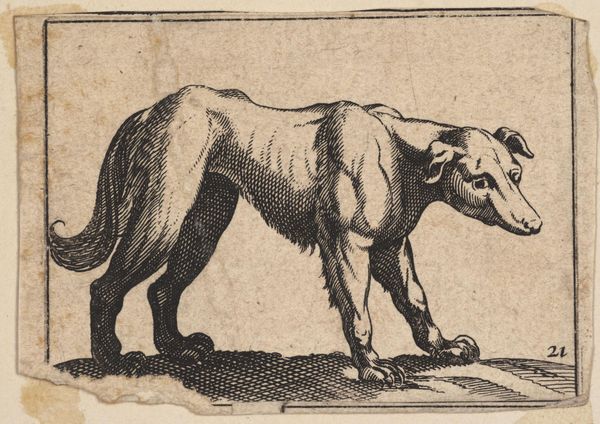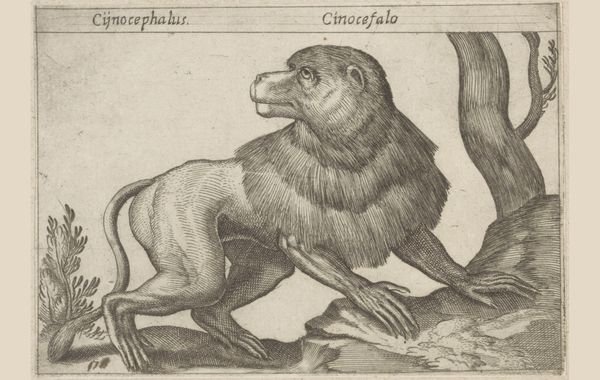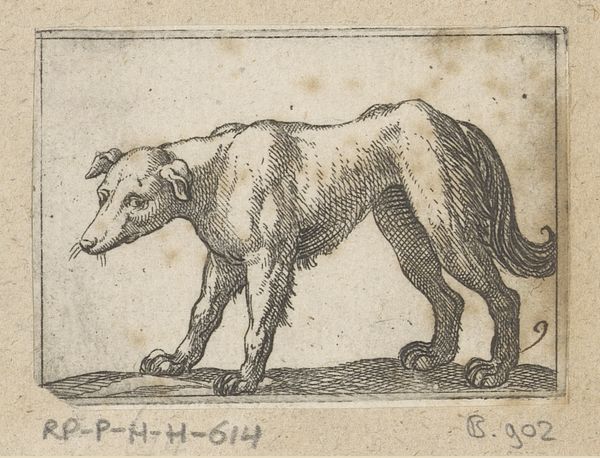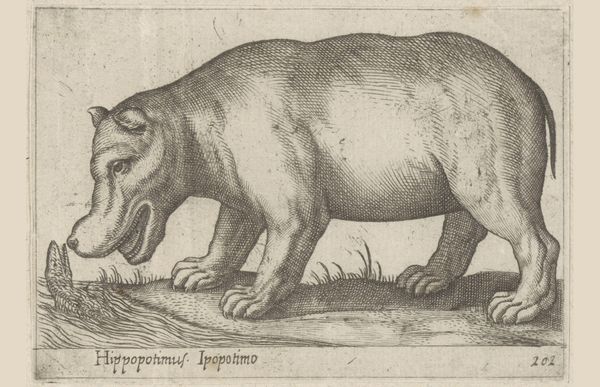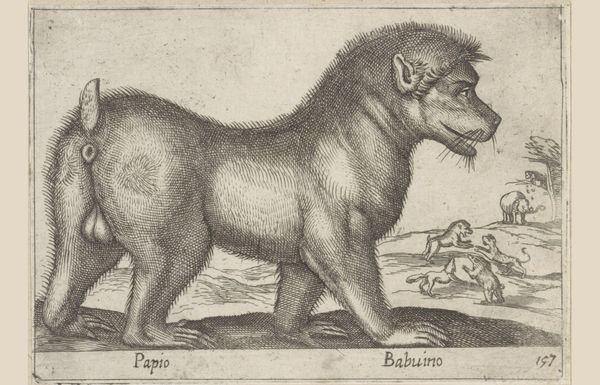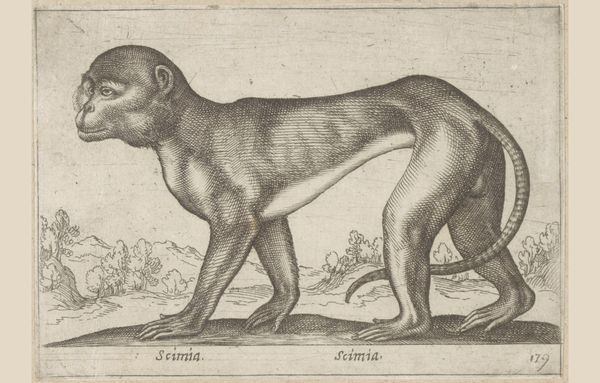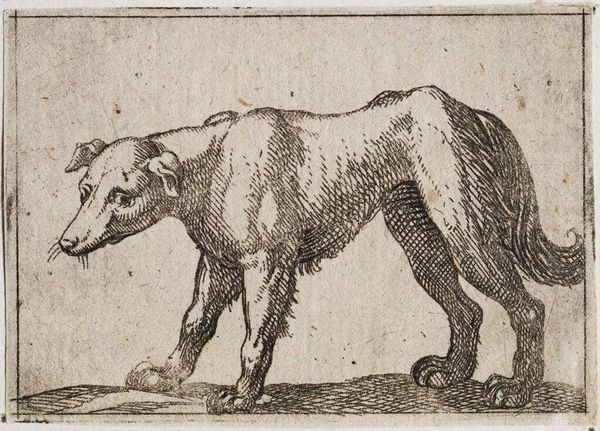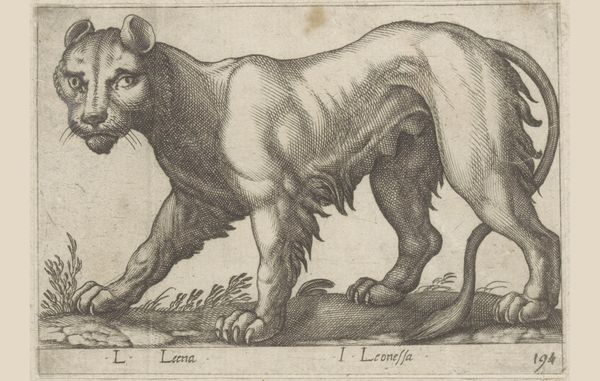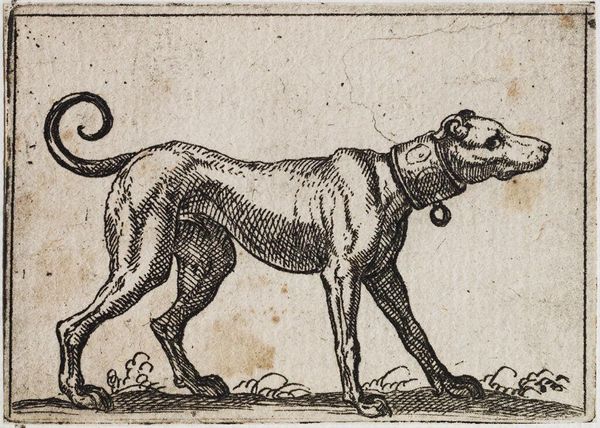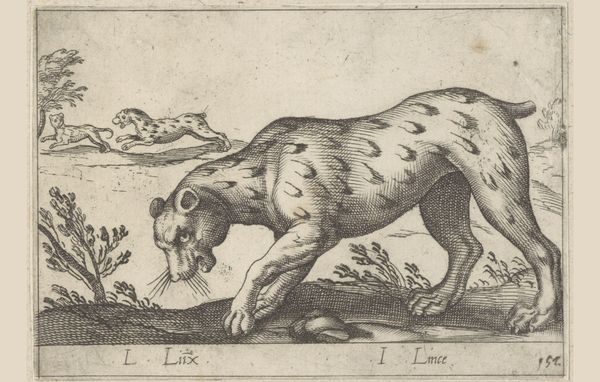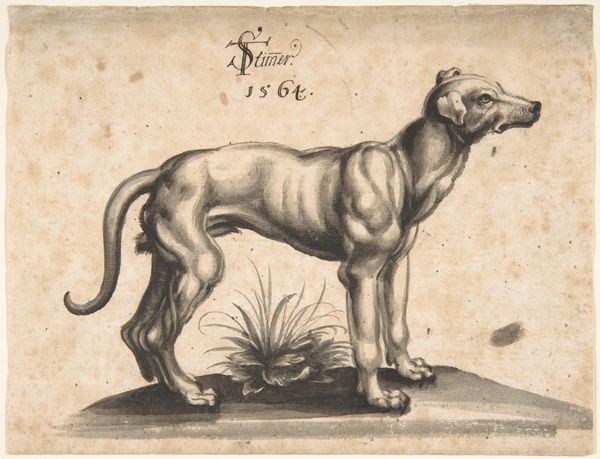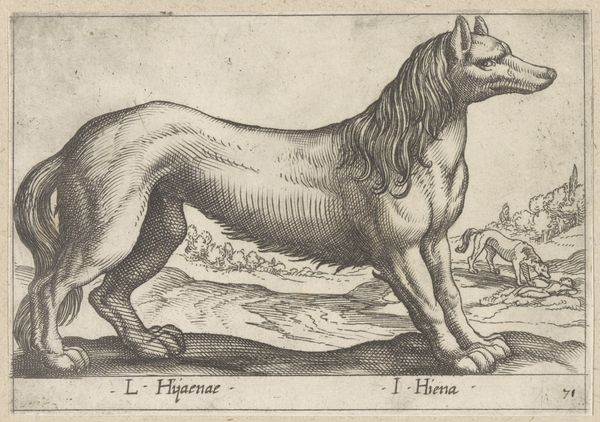
#
pencil drawn
#
light pencil work
#
pencil sketch
#
old engraving style
#
caricature
#
cartoon sketch
#
personal sketchbook
#
pen-ink sketch
#
sketchbook drawing
#
sketchbook art
Dimensions: height 95 mm, width 137 mm
Copyright: Rijks Museum: Open Domain
Curator: Look at this fascinating print, likely dating to before 1650. The Rijksmuseum attributes this work to Antonio Tempesta. It's titled "Opossum of buidelrat (Dedelphidae)". Editor: It strikes me as quite strange and unsettling, but strangely beautiful. There's something very primal about the way this opossum is depicted. Curator: Tempesta often incorporated animal imagery. Here, he’s chosen an opossum. Its unusual physique is rendered in meticulous detail, focusing particularly on the maternal act. How do you read its imagery? Editor: I think there's a deliberate highlighting of the female reproductive form. It almost verges on the grotesque, and in its time could've signaled a certain kind of critique. The animal itself was relatively unknown in Europe at the time. It reflects an intersection between natural history and the male gaze projecting ideas of "otherness" onto it. Curator: It is true that the opossum wasn't a common sight in Europe during that period. The symbolic weight attached to new creatures always says more about the viewers than the subject. Perhaps this engraving served as a sort of grotesque 'memento mori,' a reminder of life's cycles and inherent, often awkward physicality. Editor: The reproductive focus, emphasized by those dangling teats, couldn't have escaped an audience accustomed to more idealized or allegorical forms of motherhood. So what does this seemingly grotesque representation of fecundity mean? How did audiences in Tempesta’s day interpret it? Curator: Early modern audiences might well have viewed this as an example of nature's strange and diverse forms, as a glimpse into the New World that challenged their established worldviews. Editor: That's probably correct. And while our interpretations change across history, this piece encourages us to continue questioning how we portray the female body. Curator: Agreed. And for me, the depiction also stands as a reminder of the enduring power and often mystifying aspects of the animal kingdom, translated across centuries and continents. Editor: It's truly strange how one work can be looked at differently. These opossums invite dialogues, old and new, about nature, culture, and female bodies.
Comments
No comments
Be the first to comment and join the conversation on the ultimate creative platform.
